Circuit-Zone.com - Electronic Projects
Posted on Tuesday, December 12, 2023 • Category: Power Supplies

I have gone without a variable lab bench power supply for too long now. The power supply that I have been using to power most of my projects has been shorted out too many times. I have actually killed 2 by accident and needed a replacement. I had many 18650 lipo batteries lying around my workshop so I decided to use them to build a portable variable bench power supply that could be easily moved around and used on the go. The power supply consists of DC-DC step up power module, voltage and current display, a switch, standard size 10K trim pots, XT-60 and a balance connector for charging an array of 8x4 18650 batteries.
Posted on Wednesday, May 26, 2021 • Category: Power Supplies
 This circuit uses an LM317 regulator, chosen because of its built-in over-current and over-temperature protection. Its output is boosted up to 5A by the MJ2955 transistor. The output voltage is varied by adjusting VR1 potentiometer. Adjustable current limiting from 60mA to 5A is provided by op amp TL071 IC that is used as a comparator which monitors the voltage across the 0.1 Ohm current sensing resistors.
Posted on Monday, October 5, 2020 • Category: Power Supplies
 Every electronics hobbyist needs at least one bench power supply in his house for tinkering with some weekend projects. This small power supply was built with an old 19V 3A laptop charger and buck-boost converter. Output voltage is continuously adjustable from 1.25V to 33V with up to 3A current. I have been using it for 3 weeks now and have realized that I am using it more than I thought I would.
Posted on Monday, May 4, 2020 • Category: Power Supplies
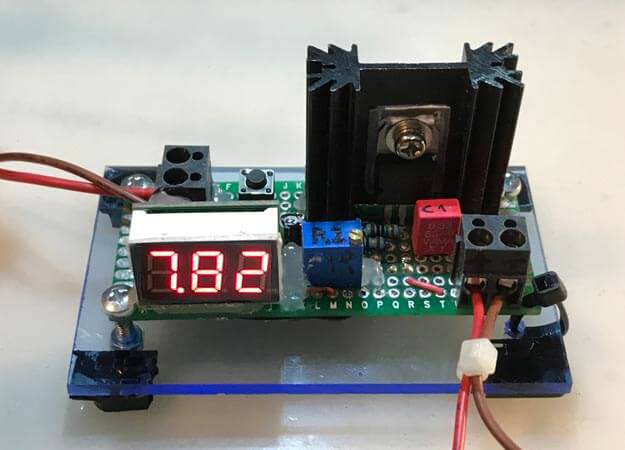 The LM350 is a tried and true 3A adjustable voltage regulator. It accepts an input voltage up to 35V and can deliver an output voltage between 1.25 and 33V. It is rugged beyond belief. Where fairly beefy step-down converters go up in smoke, the LM350 just takes a nap. And a nap is infinitely better than a plume of smoke. LM350 can also be used to limit current though that requires a separate LM350/LM317 in series with our voltage regulator.
Posted on Monday, February 25, 2019 • Category: Power Supplies
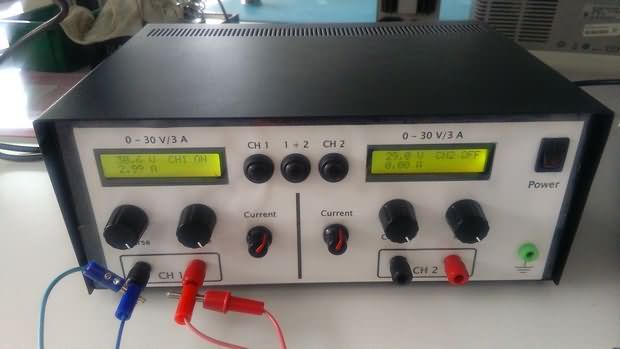 Presented here is a Laboratory Power Supply with 0-30V voltage and 0-3A current regulation. The schematic is pretty straightforward, it uses standard dual opamps such as TL082, TL062, TL072, NE5532, RC4558 and MC34072. The trimmer P3 adjusts the minimum current limit. P4 adjusts the maximum output voltage. After the final adjustment you may replace the trimmers with standard resistors. Power transistor dissipates quite a bit of heat and thus require a heatsink with optional fan. We may use two or tree transistors in parallel with emitter resistors to achieve more power. The transformer must be 100-120W with 27-30VAC output voltage.
Posted on Saturday, May 26, 2018 • Category: Power Supplies
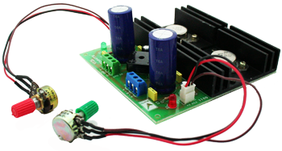 This project is a solution to power up most of devices or projects requiring dual (+/-) adjustable power supply. The circuit is based on LM317 positive and LM337 negative voltage regulators. LM317 series of adjustable 3 terminal regulator is capable of supplying in excess of 1.5A over a 1.2V to 30V DC output range, due to TO3 package of IC and large heat sink the power supply can handle maximum load current.
Posted on Monday, November 13, 2017 • Category: Power Supplies
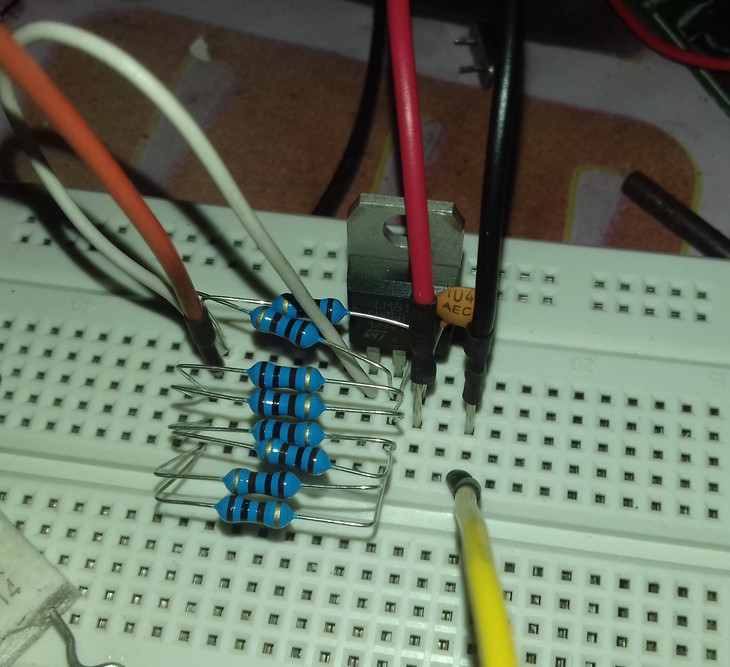 A constant current source source can supply a fixed current to a load regardless of input voltage or load change. LM317 / LM350 / LM338 constant current source is one of the simplest design. The LM317 is quite useful as a constant current source, works on a wide input voltage range, from 3V up to 40V. So, here’s the LM317 based constant current source, it’s design and a little about it’s working principle.
Posted on Friday, September 30, 2016 • Category: Power Supplies
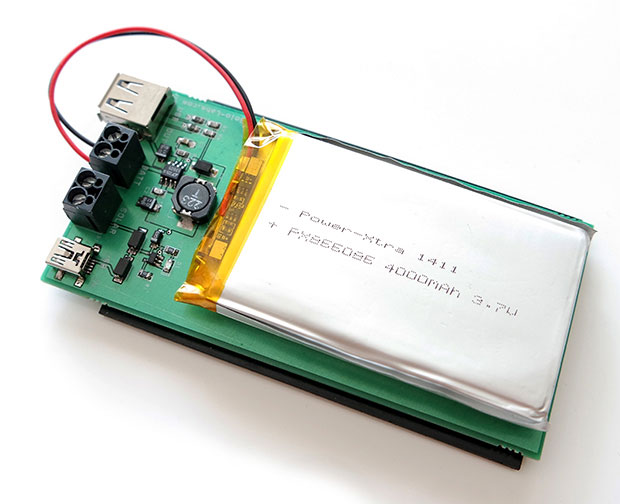 Solar energy is renewable, free, widely available and clean form of energy. It is considered as a serious source of energy for many years because of the vast amounts of energy that is made freely available, if harnessed by modern technology. Many people are familiar with so-called photovoltaic cells, or solar panels, found on things like spacecraft, rooftops, and handheld calculators. The cells are made of semiconductor materials like those found in computer chips. When sunlight hits the cells, it knocks electrons loose from their atoms. As the electrons flow through the cell, they generate electricity.
In this project, we are building a power bank which harvests energy by using a solar panel. The energy gained by the solar panel is stored in a LiPo battery. Then the battery is used to supply a stable 5V which is used by USB gadgets. The power bank can also be charged by an external 5V source. The best thing for this power bank during day that you don’t need to remember to charge it. It charges itself by using the sunlight and you don’t come up with an empty bank.
Posted on Thursday, June 2, 2016 • Category: Power Supplies
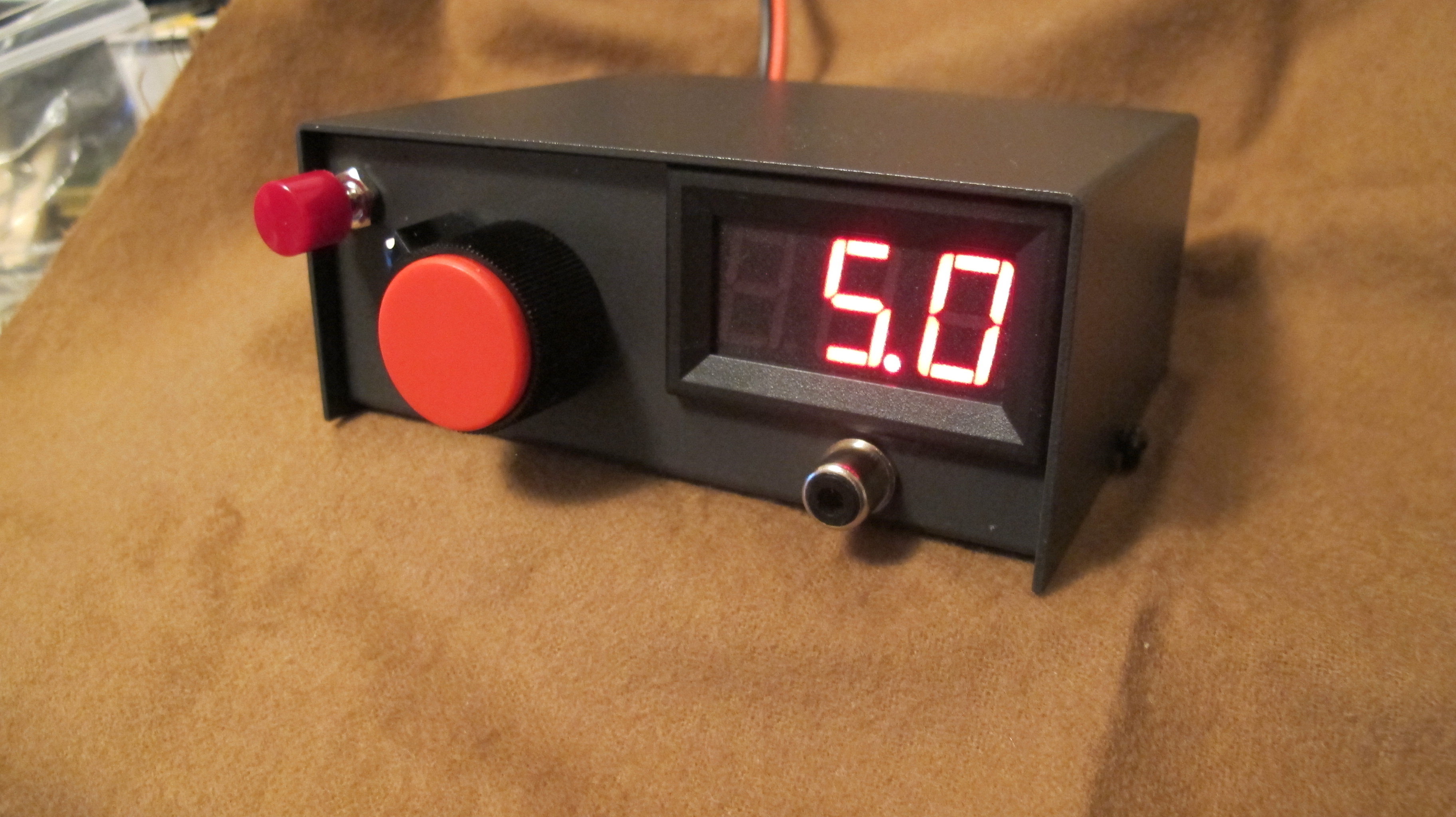 After many years of employing this ugly and clumsy bench power supply, I decided it was time to build something better, smaller and nice looking. It began as a variable power supply based on an LM338 5A voltage regulator and external power adapter. LM338's Data Sheet has several very helpful application notes and circuits. I chose one that illustrated variable output and included protection diodes. Diodes are included to protect the regulator from damage in case the input is accidentally shorted to ground. This is a distinct possibility if using jumpers to attach it to the power supply. Also the output of station supply may be shorted if some other device fails. Without the diodes, if this happens, the capacitors will dump their charge back through the regulator. Since the current spike may be many amps, the regulator may fail. The diodes steer the current around the regulator and into ground, thereby protecting it from damage. With adequate input the LM338 makes a fabulous variable power supply. This small supply is user friendly and fits nicely on my cluttered bench.
Posted on Tuesday, February 16, 2016 • Category: Power Supplies
 This is a high quality bench power supply with adjustable output voltage from 0 to 30V and adjustable output current from few miliamperes to 4 amperes. Built-in electronic output current limiter that effectively controls the output current makes this power supply indispensable in the experimenters laboratory as it is possible to limit the current to the typical maximum that a circuit under test may require, and power it up then, without any fear that it may be damaged if something goes wrong. There is also a visual indication that the current limiter is in operation so that you can see at a glance that your circuit is exceeding or not its preset limits.
Posted on Tuesday, April 22, 2014 • Category: Power Supplies
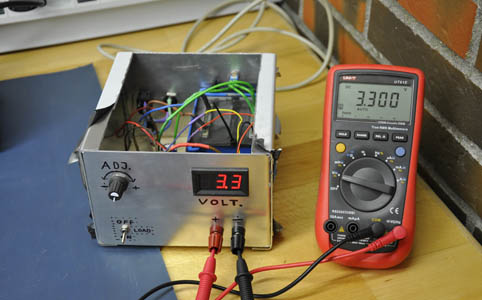 If you are starting to learn electronics variable bench power supply is the first thing you should build to power your projects. This simple power supply is built around the LM317/LM338/LM350 linear voltage regulator. The LM317 is one of the most popular voltage regulators on the market, and for good reason. It is very simple to use and requires very few external components. LM317/LM338/LM350 regulators provide a stable and reliable output voltage adjustable between 1.25V and 37V. The short circuit protection is also built right in the voltage regulator.
Posted on Wednesday, January 22, 2014 • Category: Power Supplies
 I normally use a USB port as power supply for my projects but some ICs need 3.3V instead of 5V. Therefore I decided to build this small dual power supply. Power supply uses two low dropout voltage regulators that provide up to 800mA of output current and come in TO-220 package. LD1117V33 is used for 3.3V and LD1117V50 for 5V. Input voltage is 6V-15V and both regulators can be switched on/off individually.
Posted on Friday, April 26, 2013 • Category: Power Supplies
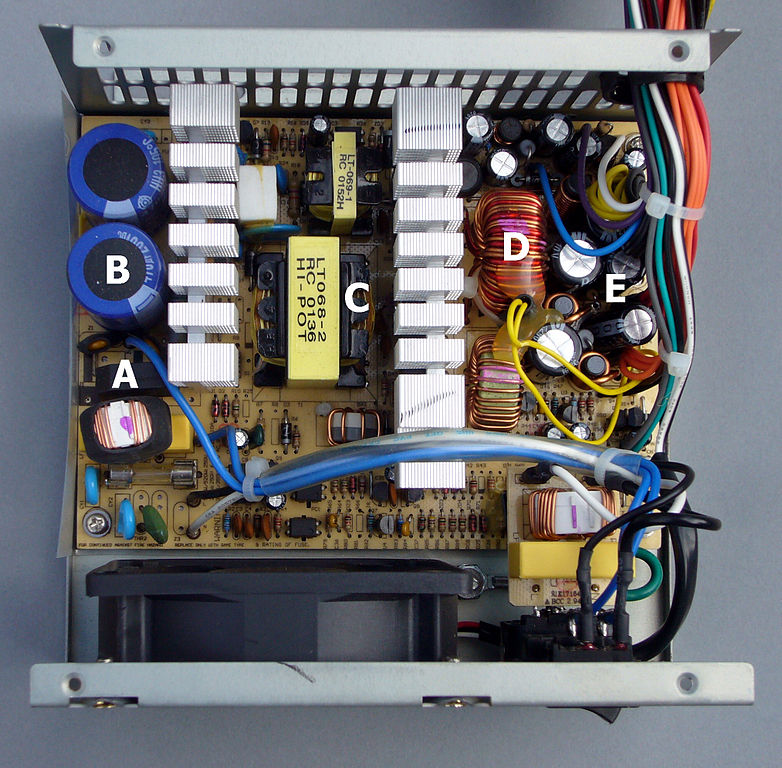 Modern power supplies are known as "switching regulator power supplies."
In most switching supplies, the 110 volt AC input is first rectified by
two diodes and filtered by a pair of capacitors. This creates two high-
voltage sources; one positive and the other negative.
A pair of transistors is then used to switch these high voltage supplies
across the primary winding of a transformer. This switching action is
very fast. A typical switching speed is around 40,000 cycles per second
or 40KHz. An integrated circuit is commonly used to control the
transistors. This IC not only controls the speed at which the
transistors are switched, but also controls the amount of time that each
transistor is energized. The output voltage of the power supply is
determined by the "on" time of the transistors. If the transistors are
keep on for a longer period of time, the output voltage of the supply
will rise, while shorter times lower the output voltage. This is known
as "pulse-width modulation."
Posted on Sunday, March 24, 2013 • Category: Power Supplies
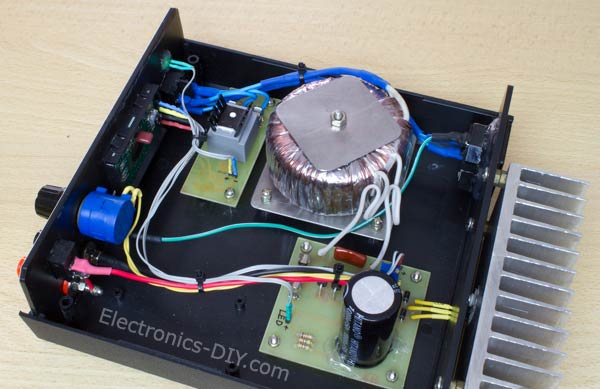 Here's how to build your own adjustable power supply based on LM317. The IC LM317 is so versatile that an almost unlimited number of different, small, high grade power supply circuits can be built using it. The configurations can be introduced for different applications for upgrading an existing unit with features that would virtually make it indestructible.
A few useful application circuits using IC LM317, collected from National Semiconductor's PDF datasheet are meticulously explained in this section with the help of the relevant circuit diagrams. All the circuits discussed below require an unregulated input voltage (max. 35 Volts) from any standard transformer/bridge/capacitor network.
Posted on Thursday, January 24, 2013 • Category: Power Supplies
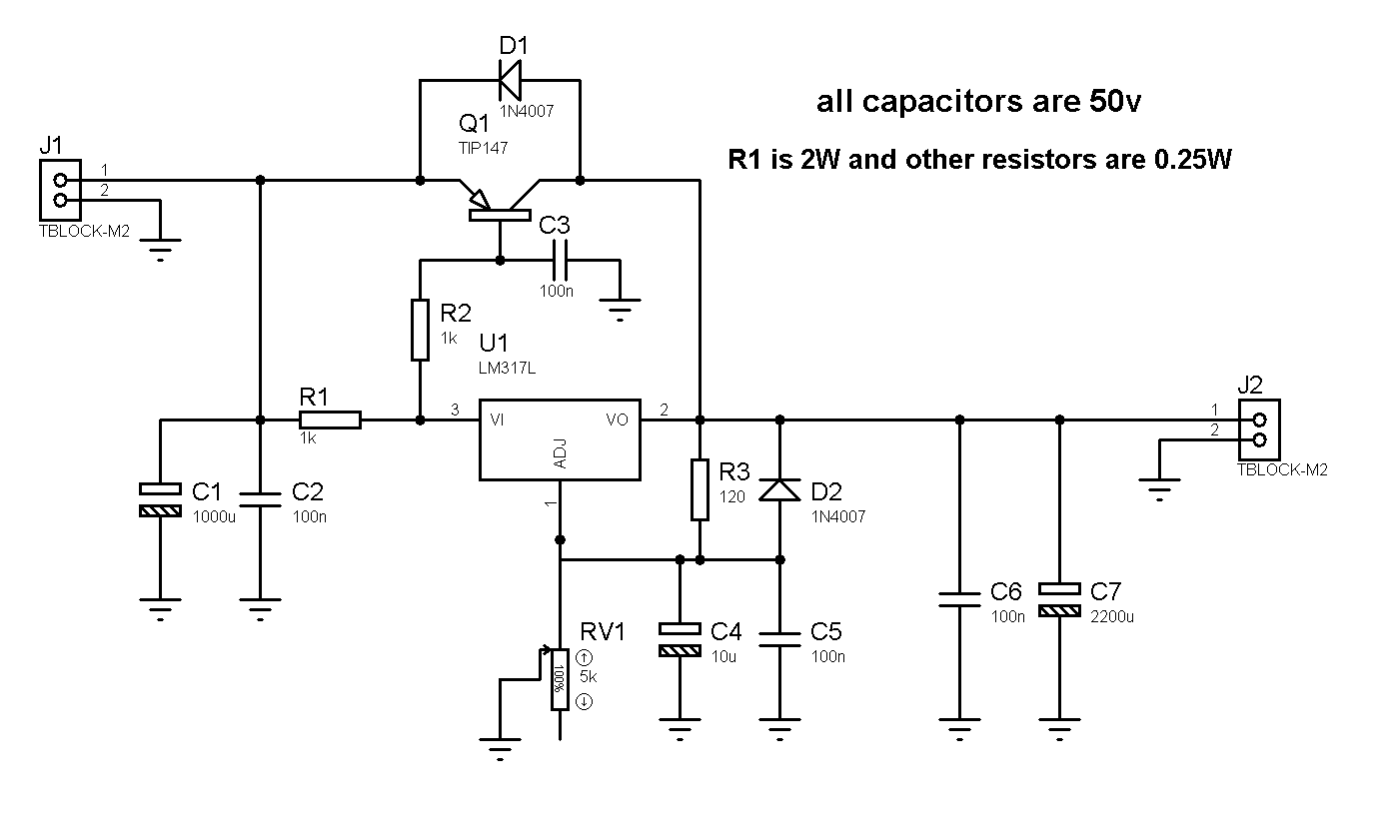 This is very simple 1.2 - 36V adjustable bench power supply with 5A of output current. Max input voltage is 37V and output is adjustable via potentiometer between 1.2 up to 36 volts. TIP147 PNP darlington transistor boosts the current of LM317 from 100mA to 5A. LM317 is the most useful and inexpensive adjustable regulator and for this circuit you can also use LM317L that can give 100mA, that's enough for transistor bias. D1 and D2 are protection diodes because when you turn the circuit off the output capacitors are discharging and can damage the transistor or regulator. 100nf capacitors are in parallel with electrolytic capacitors to remove high frequency noise because large value electrolytic have large ESR and ESL and can't remove high frequency noise.
Posted on Sunday, January 6, 2013 • Category: Power Supplies
 12V dual power supply has symmetrical voltage output +12V and -12V with limited current to 100mA. It has been built to power three OPA627 opamps of Audio DAC I am building with PCM1792 & PCM1794 chips. Circuit has on the primary side only fuse. I couldn't find smaller than 50mA. We can connect power cord directly to the X1 connector or via power switch on the chassis. On the secondary side of transformer are connected two fuses 100mA and after them is bridge rectifier. For filtering of rectified voltage there are C1 and C2. Next are positive and negative voltage regulators 78L12 and 79L12 with decoupling capacitors C3 to C6 close to regulators. Next are small filter capacitors and also signaling LEDs connected via resistors. Output voltages are connected to 3 pin connector. For signaling of presence of voltage is enough only one LED. We can also use 2 pin connectors for LED connecting.
Posted on Monday, May 21, 2012 • Category: Power Supplies
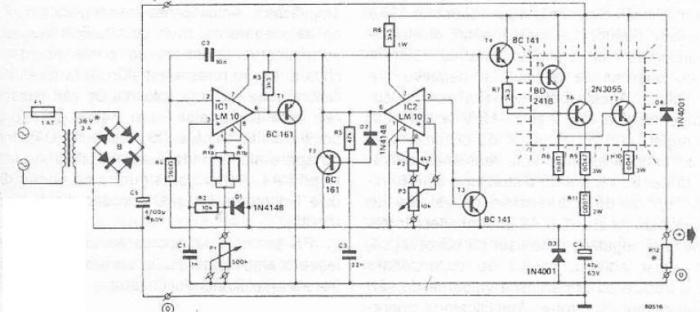 An 50v bench power supply can be made using electronic diagram below which is designed using LM10 op amp and 2n3055 transistors. This LM10 2n3055 50v bench power supply allows an output voltage regulation in a range between 0 and 50 volts and the output current can be limited to a maximum of 2A. Output voltage increases linearly with the amount of resistance potentiometer P1, while the current can be adjusted linear using potentiometer P3. Potentiometer P2 serves to regulate maximum output current (maximum value is 2A).
Posted on Sunday, May 13, 2012 • Category: Power Supplies
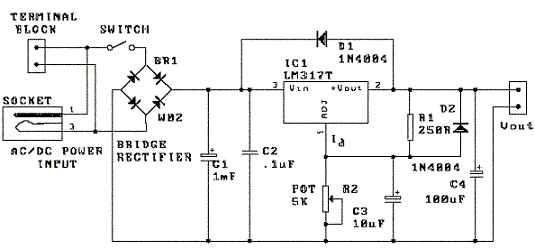 This is a basic universal variable Power Supply voltage regulator circuit using an LM317, 3-terminal regulator in a TO-220package. The Universal Power Supply output voltage can be set to anywhere in the range 1.5V to 30V by selecting two resistances. By using a potentiometer, R2, as one of the resistors you can dial up the output voltage wanted. Either AC or DC input can be supplied to the PCB via a socket or terminal block. Connection can be either way around. This is because we have provided a bridge rectifier on board. The input DC voltage to the regulator must be at least 2.5V above the required output voltage. An off/on switch is provided.
For many applications (say 12V at 60mA) a heat sink will not be necessary. The LM317 will provide slightly higher output voltages than 30 volts. However, for most hobbyists over 30V will not be needed. So to make a small PCB we have used some electrolytic capacitors rated to 35 volts. To be safe for continuous operation the maximun input DC voltage to the regulator should not be over 33V. With a 2.5V to 3.0V drop across the regulator this will give a regulated output of 30V. You can draw up to 1.5A from the LM317. If you need higher then use an LM338T rated to 5A.
Posted on Monday, February 20, 2012 • Category: Power Supplies
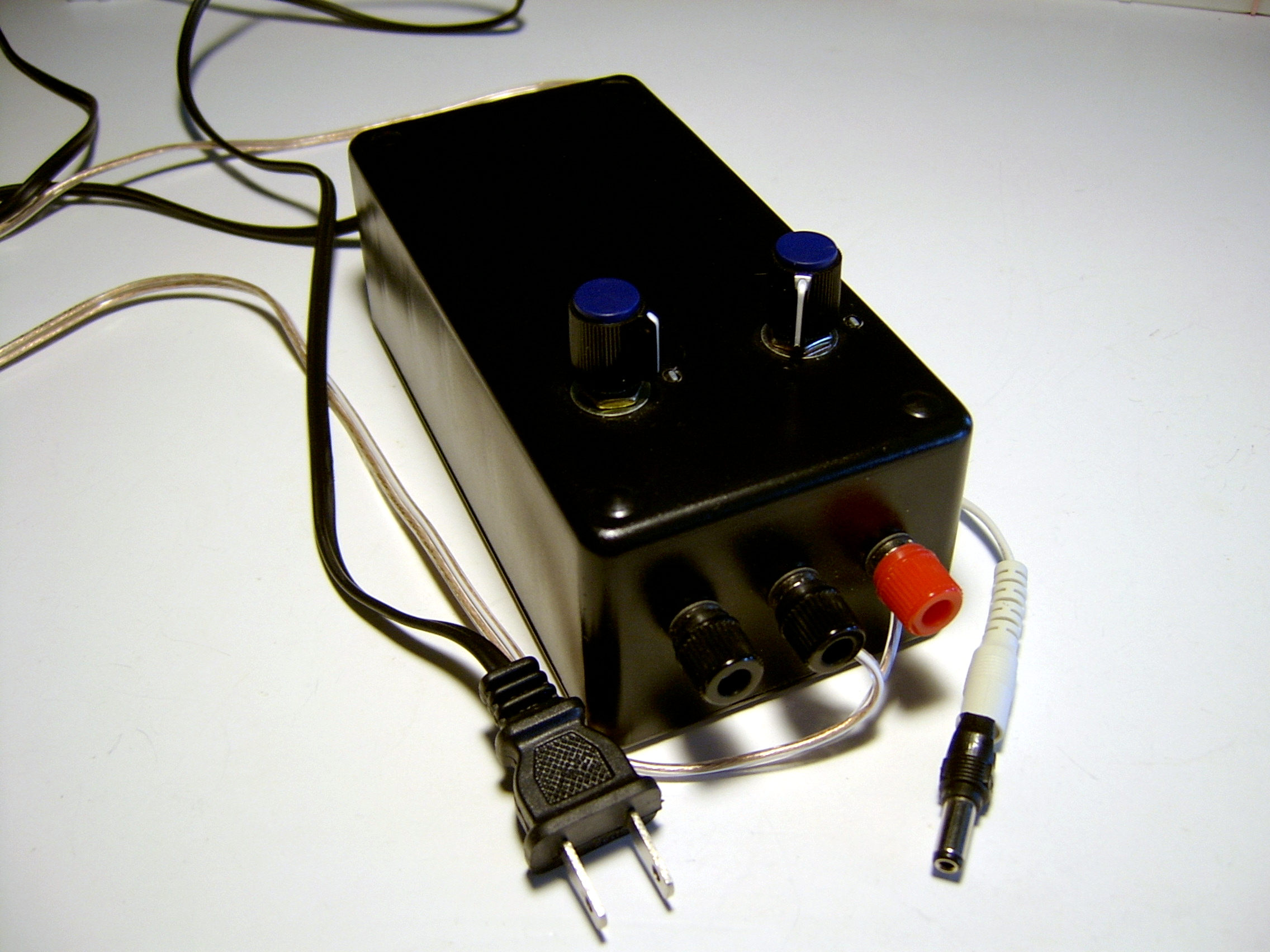 Split power supply provides a stable regulated bipolar voltage in the range ±1.5V to ±17V. It is based on LM317/LM337 linear voltage regulators that also have a short circuit protection. Most parts are easily accessible, including a 6"x3"x2" project box, 12V 1.2A center tap transformer, pots, knobs, etc. Power supply schematic shows how to wire LM317/LM337 to get +/- split voltage output.
Posted on Sunday, October 23, 2011 • Category: Power Supplies
 This is an add-on over voltage protection circuit for LM317 voltage regulator. It is a voltage regulator that allows a 6V portable supply to be derived from the 12V car battery. You can add a 6.2V zener diode and a LED to warn you when the input supply is overvoltage. If you could find a relay that would operate from 6.2V right up to 12v that you could connect in such a way that if over voltage occurred, then the relay would automatically switch off the output preventing damage to any connected equipment.
Such a relay would be quite difficult to find, so I designed this, it is a simple two transistor circuit which will switch off the output should the voltage raise above 6.2v this can be changed by selecting a different value of zener diode.
Posted on Saturday, October 8, 2011 • Category: Power Supplies
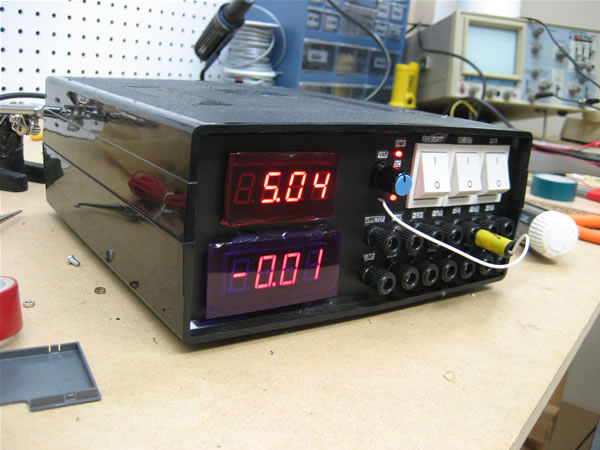 Presented here is a circuit for 30V 10A variable bench power supply that offers variable voltage and current adjustment. Power supply is based around a LM723 voltage regulator chip and has current limiting. I often end up with the power clips shorting out on the bench and with no problems. I have had this circuit in use now for over 20 years and has never let me down and is one of the most handiest gadgets i have built. The 2N3055 transistors are a well proven high current transistor. More 2N3055 transistors can be connected together for more output current. The transistors will need to be mounted on a good size heatsink.
Posted on Friday, July 15, 2011 • Category: Power Supplies
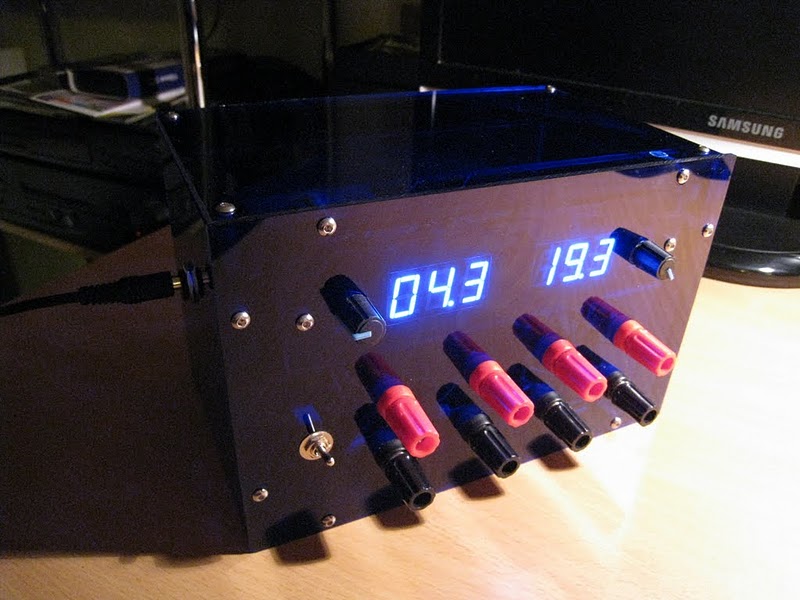 I’ve built myself my own universal, adjustable bench power supply.
This isn’t strictly astro stuff but the main reason I built it is to experiment with TFT backlight panels that I use for my lightboxes.
I needed 5V and 12V to play around with the inverter boards and figure out their pin-out. I considered buying a bench power supply. But prices were too high, especially for ones with adjustable voltages. So I decided to build my own.
This one has 4 outputs. One 5Volt, one 12V and two individually adjustable outputs going from about 1.5V to 19.5V. Each can draw up to 1.5Amp with a total of 3.5A for all together. The input is a standard replacement laptop power supply 20V, 3.5A. With a stronger external power supply the total output current can be higher, up to 1.5A per output. But currently the 3.5A is more than enough.
Each of the adjustable outputs has its own little voltmeter built in.
The fixed voltage regulators are based on a 7805 for the 5V and a 7812 for 12V. The two adjustable regulators are based on one LM317 each.
Posted on Wednesday, July 13, 2011 • Category: Power Supplies
 There are many types of power supply. Most are designed to convert high voltage AC mains electricity to a suitable low voltage supply for electronics circuits and other devices. A power supply can by broken down into a series of blocks, each of which performs a particular function. Each of the blocks is described in more detail below:
Transformer - steps down high voltage AC mains to low voltage AC.
Rectifier - converts AC to DC, but the DC output is varying.
Smoothing - smooths the DC from varying greatly to a small ripple.
Regulator - eliminates ripple by setting DC output to a fixed voltage.
Posted on Tuesday, July 12, 2011 • Category: Power Supplies
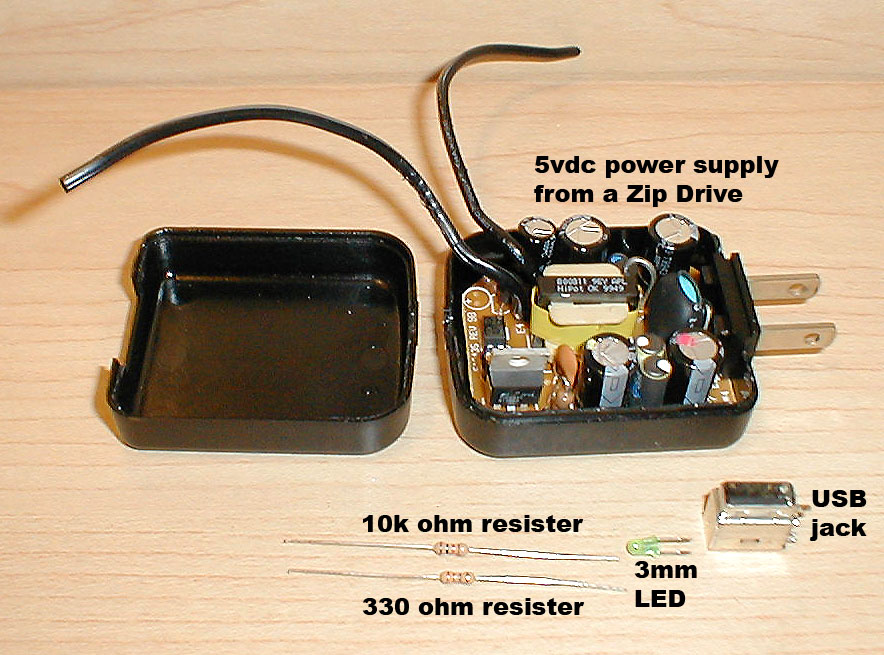 Here is a quick and easy way to make an USB charger / power supply powered by the wall outlet. This can be used to charge / power a PSP, iPod or any other USB device.
First you need to acquire a regulated 5 vdc wall wart rated at 500ma or higher. The one I used is from an IoMega Zip drive. It has a switching regulator with an output of 5vdc @ 1amp. This is a cool way of making an old wall-wart (plug in power supply) into a useful USB power supply and requires very few extra components.
Posted on Saturday, June 25, 2011 • Category: Power Supplies
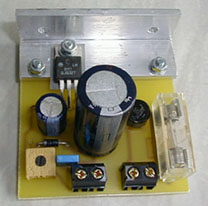 Here's variable power supply voltage regulator circuit based around LM317 that provides fully regulated output voltage between 1.25 and 37v with current up to 1A. In many cases we can manage with a suitable fixed voltage regulator such as 5v or 12v, but occasionally we need a non-standard voltage. In these circumstances the LM317 range of regulators proves to be very useful.
Posted on Wednesday, May 25, 2011 • Category: Power Supplies
 This is high current 12V power supply. Power supply uses LM7812 IC and can deliver up to 30A to the load by the help of the TIP2955 pass transistors. Each transistor can handle up to 5A and six of them result an total output current of 30A. You can increase or reduce the number of TIP2955s to get higher or lower current outputs.
In this design the IC delivers about 800mA. A 1 amp fuse is connected after the LM7812 to protect the IC against high current transients.
The transistors and the 12V regulator IC both require adequate heatsinking. When the load current is high, the power dissipation of each transistor also increases so excess heat may cause the transistors to fail. Then you will need a very large heatsink or fan cooling.
100Ω resistors are used for stability and prevent current swamping as the tolerances of dc current gain will be different for each transistor.
The bridge rectifier diodes must be capable of passing at least 100 amps.
Posted on Monday, May 23, 2011 • Category: Power Supplies
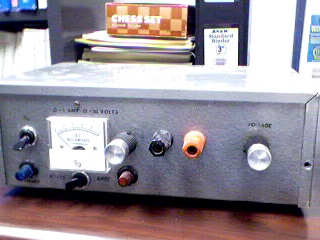 The linear laboratory power supply, shown in the schematic, provides 0-30 volts, at 1 amp current, using a discrete transistor regulator with op-amp feedback to control the output voltage. The supply was constructed in 1975 and has a constant current mode that can be used to recharge batteries. With reference to the schematic, lamp, LP2, is a power-on indicator. The other lamp (lower) lights when the unit reaches its preset current limit. R5, C2, and Q10 (TO-3 case) operate as a capacitor multiplier. The 36 volt zener across C2 limits the maximum supply voltage to the op-amps supply pins. D5, C4, C5, R15, and R16 provide a small amount of negative supply for the op-amps so that the op-amps can operate down to zero volts at the output pins (pins 6). A more modern design might eliminate these 4 components and use a CMOS rail-to-rail op-amp. Current limit is set by R3, D1, R4, R6, Q12, R10, and R13 providing a bias to U2 that partially turns off transistors Q9 and Q11 when the current limit is reached. R4 is a front panel potentiometer that sets the current limit, R22 is a front panel potentiometer that sets the output voltage (0-30 volts), and R11 is an internal trim-pot for calibration. The meter is a 1 milliamp meter with an internal resistance of 40 ohms. Switch S1 determines whether the meter reads 0-30 volts, or 0-1 amp.
Posted on Saturday, May 21, 2011 • Category: Power Supplies
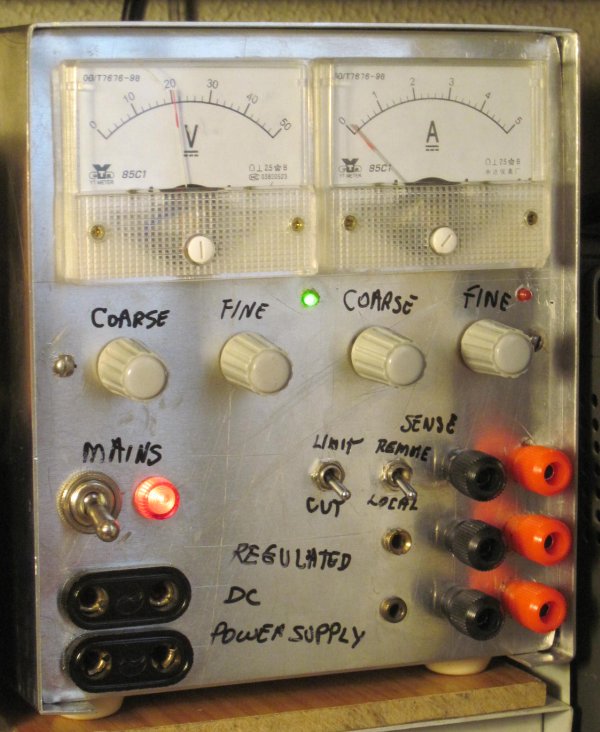 Here's a laboratory power supply with output voltage continuously adjustable from 0 V to 24 V DC, remote voltage sense capability (Sense internal/external), output current limit is continuously adjustable from 0.04 A to 4 A and output current can be limited continuously or output shut down (Limit/cut).
Remote sensing means there are two additional wires which sense the delivered voltage at the load and compensate for any voltage drop along the cables which carry the delivered current. This improves voltage regulation at the load considerably but requires two additional wires for the sensing. A switch allows internal sensing at the output terminals for simpler operation when remote sensing is not required.
I like to have a switch which lets me choose between limiting the output current continuously (useful for charging batteries), or shutting down the output if the current limit is reached (useful for protecting equipment being repaired).
Another thing I like to have in the power supplies I build is a push button switch which multiplies the current scale by a factor of 10. That way one can momentarily press the button and get a much more precise reading of current. By making the switch a push button one cannot forget to turn the function off and risk the instrument being damaged when a large current is put through it. In this case and for now I am not installing this function because I am using the instrument's shunt resistor to sense the current for the electronic control system and I would have to change several things. I might do this in the future.
Posted on Tuesday, May 17, 2011 • Category: Power Supplies
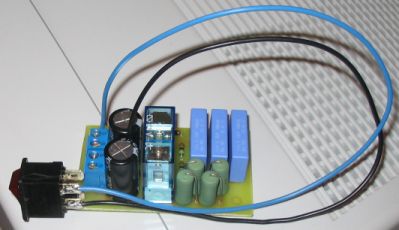 The circuit will limit the current through the supply wires to 5.5A for about 1.5sec. After that time the relay will close and the current flow won't be restricted anymore. This is a very interesting circuit if you have a large toroid with big electrolytic caps connected to the power supply, since these will act like short circuits for a small amount of time if they start charging. This unit is a delay unit that can be connected directly to the mains power supply. It´s not obligatory to use one but it is a good idea, specially if you have a big toroidal transformer larger than 300 VA. This unit has a delay circuit and for the delayed time the mains power is supplied through power resistors minimizing in this way the big inrush current due to big capacitors and big toroidal transformers in the power supply. When everything is stable it shorts the power resistors and supplies the mains power directly.
Posted on Thursday, May 12, 2011 • Category: Power Supplies
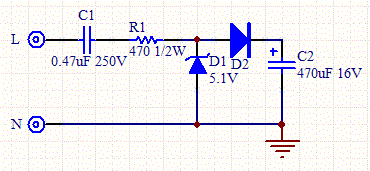 Simple, low cost and easy to build power supply. Ideal for applications that doesn’t require too much power. It can provide power to circuit that uses less than 100mA without any problem. The disadvantage of this circuit is the danger of an electrical shock, so it cannot be used if the circuit is in contact with the user. The voltage supplied by this is determined by the zener diode.
Posted on Friday, May 6, 2011 • Category: Power Supplies
 This is a DC power supply circuit using the LM317T voltage regulator IC, which is the IC of this type is very popular among electronics hobby. Parameter to regulate the output DC voltage carried by the LM317 circuit with a maximum current of 1A.
LM317 output voltage of this circuit is 6V DC, source from the stress out of the 12V CT AC transformer, and then converted to DC half-wave voltage by diodes D1-D2, and filtered by C1 capacitor. The transformer is used should be about 1-2A.
Output voltage of 6V DC power supply circuit is determined by the value of R1 and R2. Diodes D3-D4 on the LM317 voltage current circuit to protect poor return for LM317 circuit IC. As for the other capacitors C3-C4 is used to refine the output voltage, and complete power supply circuits.
Posted on Saturday, April 2, 2011 • Category: Power Supplies
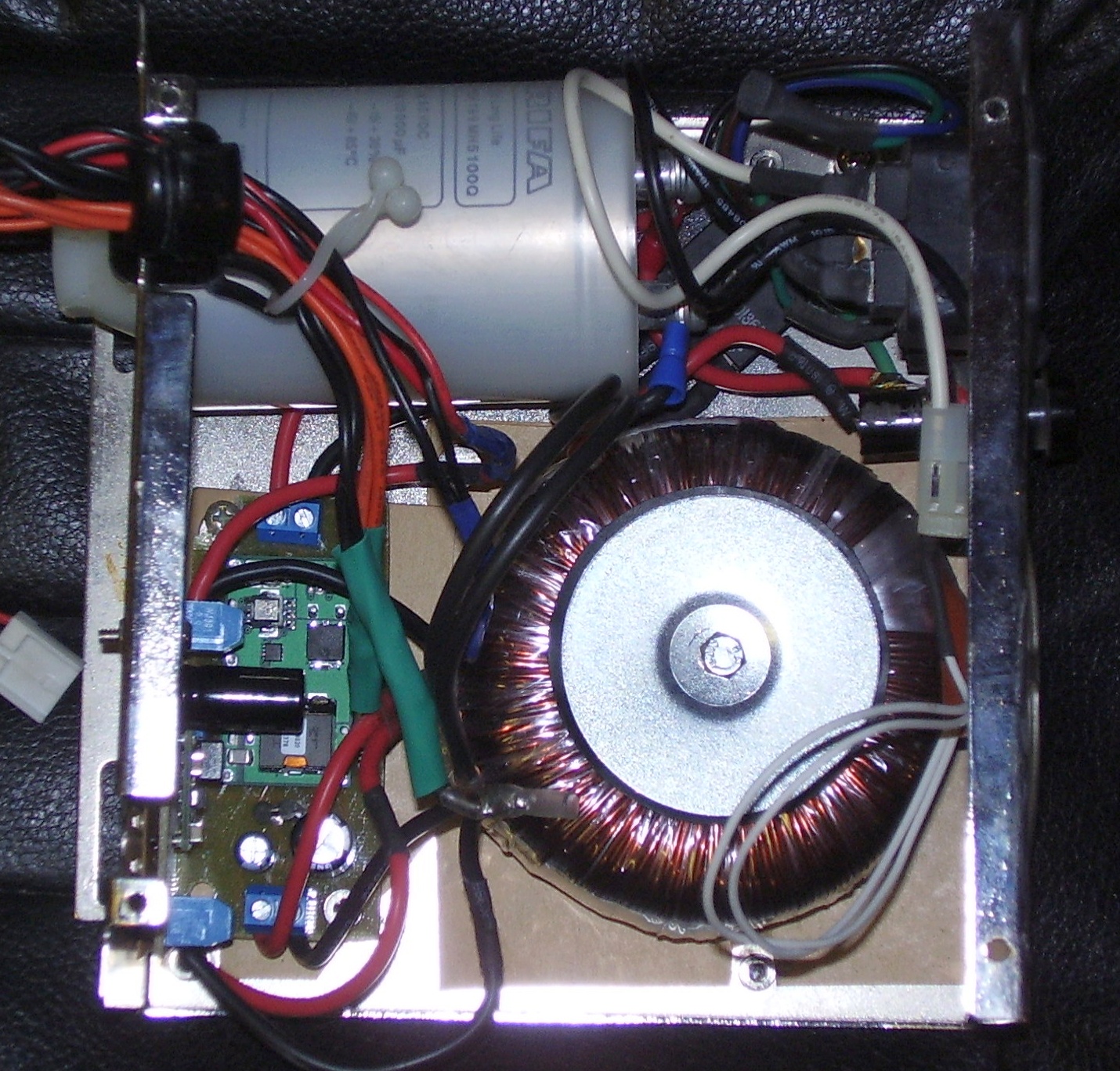 I'm replacing my old power-hog home server with a new one based on the Intel D945GSEJT mainboard. This board is essentially a netbook platform that's been "desktopified". Among it's weirder points are that it uses the Mobile 945GSE chipset, SODIMM ram, 44PIN IDE, and that it runs off a single 12V supply. The reason I chose this board is that it consumes 13W in idle and 18W under full CPU and GPU load which is pretty much the lowest power consumption one can get with an Atom system (excluding some server-specific boards that were beyond my budget). Not wanting to use an ATX PSU I've decided to build a completely new power supply for the board. Not having to bother with all the voltages needed for ATX makes this a lot easier. I've decided to make a high-amp 12V supply, and a 5V supply capable of driving two HDDs.
Posted on Wednesday, February 9, 2011 • Category: Power Supplies
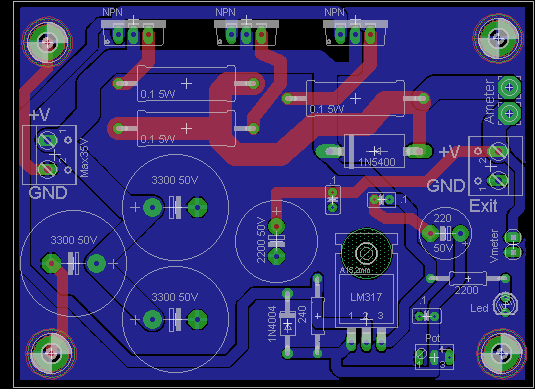 Here is a simple and economical 10A variable power supply with 1.2-30V. LM317 have been used to drive 3 NPN TIP41C transistors (or three 2N3055). Nothing to say about the project, it is really simple. The main supply must be connected to a rectified source (transformer + 20-30A bridge rectifier). For Q1,2 and 3 can be used any power TO220 transistor (TIP132C,TIP41C etc) or three external 2N3055 transistors.
Posted on Thursday, January 27, 2011 • Category: Power Supplies
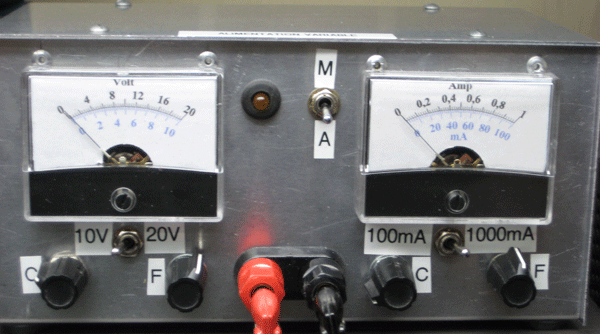 With a maximum capacity of 20 volts and 1 amp, it will supply most of your projects, it's greatest quality is the protection all your projects, it is capable of limiting the maximum current to as low as 1mA, saving your ICs and transistors in case of an accidental short circuit during the experimenting period of your projects. It is also an excellent battery charger.
Posted on Wednesday, January 26, 2011 • Category: Power Supplies
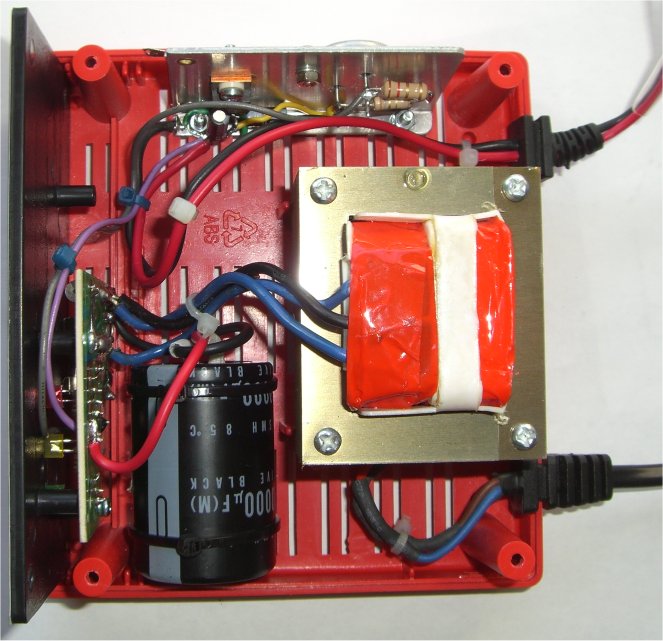 As you might expect, I have several power supplies that have more than enough capacity to power my new KN-Q7 transceiver. However, my largest power supply is normally connected to my main 100W PEP SSB transceiver. It is capable of 20A and more, but it’s not easy to connect other equipment to it. I also have a smaller 8A power supply, but I use this to power some other VHF and UHF transceivers.
In short, I wanted a simple power supply which I could dedicate to this new transceiver.
Posted on Monday, November 15, 2010 • Category: Power Supplies
 The high current regulator below uses an additional winding or a separate transformer to supply power for the LM317 regulator so that the pass transistors can operate closer to saturation and improve efficiency. For good efficiency the voltage at the collectors of the two parallel 2N3055 pass transistors should be close to the output voltage. The LM317 requires a couple extra volts on the input side, plus the emitter/base drop of the 3055s, plus whatever is lost across the (0.1 ohm) equalizing resistors (1volt at 10 amps), so a separate transformer and rectifier/filter circuit is used that is a few volts higher than the output voltage.
Posted on Friday, November 12, 2010 • Category: Power Supplies
 Amateur radio has been somewhat slow to accept switching power supplies for powering communication equipment. This is a pity, because "switchers", as they are often called, offer very attractive features, like small size, low weight, high efficiency, and low heating. True, they are generally more complicated than linear power supplies, but this is easily compensated by the fact that they can be built for a lower cost.
Some early switchers produced an objectionable amount of RF noise, bringing the whole switching technology into bad reputation. But by proper design techniques and careful EMI filtering it is possible to build very quiet switchers.
Posted on Thursday, October 21, 2010 • Category: Power Supplies
 For circuits using TTL ICs the supply voltage is a great concern and a slight increase in supply from the rated 5V may damage the IC. Using fuses alone does not solve the problem because a fuse may take several milliseconds to blow off and that’s enough time for the IC to get damaged.
Posted on Monday, October 18, 2010 • Category: Power Supplies
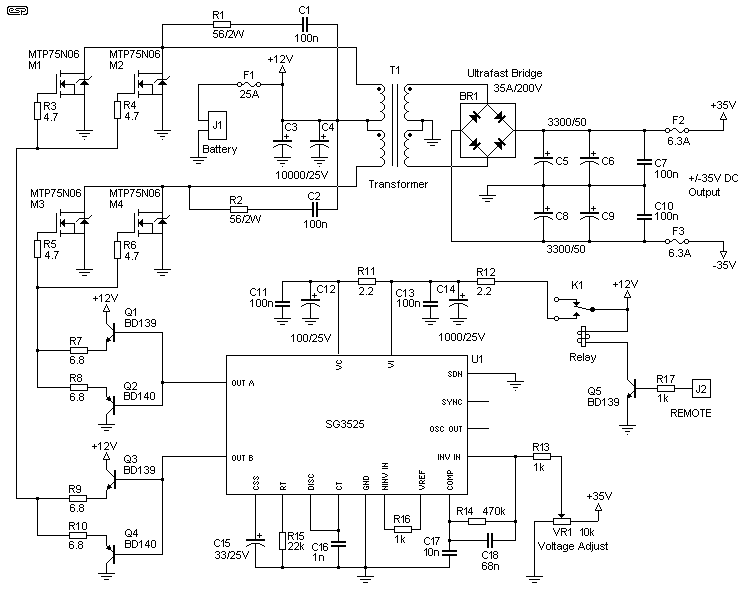 The selected switching topology is called a "push-pull" converter, because the transformer has a double primary (or a "center-tapped" one, if your prefer). The center tap is permanently connected to the car battery (via an LC filter to avoid creating peaks in the battery lines, which could affect other electronic equipment in the car). The two ends of the primary are connected to a pair of paralleled MOSFETs each that tie them to ground in each conduction cycle (Vgs of the corresponding MOSFET high).
Posted on Saturday, October 16, 2010 • Category: Power Supplies
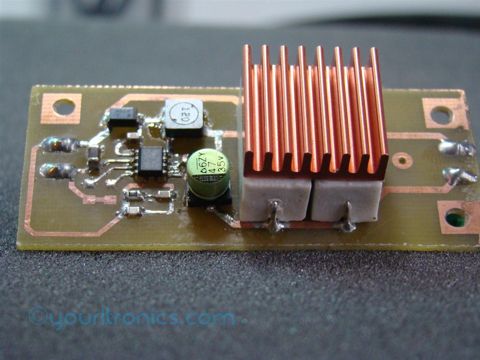 In this article I continue my project where I needed a constant current source. In the previous article I talked about the first approach the LM317 constant current source which didn’t worked out that well but could of been improved as suggested by some of my readers in the comments. So I decided to use a dc-dc converter and turn it into a constant current source. Since I’m using the TPS54232 in another project and I have it around I decided to use it. This technique can also be applied to other dc-dc converters with a bit of reading on the subject.
Posted on Thursday, May 20, 2010 • Category: Power Supplies
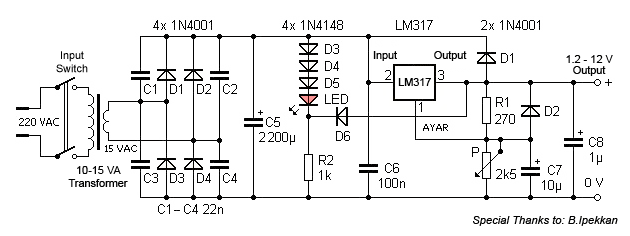 This is a 1.2 - 12 V, max 1A power supply with a low voltage indicator LED. The indicator part incluedes three diodes and one LED. For example you are charging a battery, you can observe the charge status at that moment. Another advantage of this circuit, when the drawn current exceeds 1A (practically 0.85A), the current protector in LM317 intervens and LED indicator warns you about the very low output voltage.
Be careful while choosing the transformer. Most of the products are specified as 10VA but their outputs are not as said.
Another good property of this circuit is the mains noise does not pass to the DC part.
Posted on Wednesday, April 28, 2010 • Category: Power Supplies
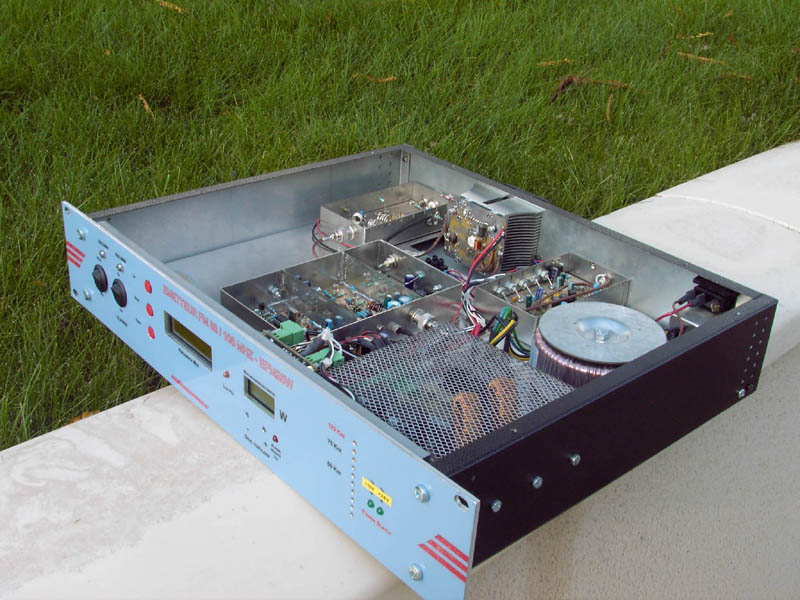 Power supply used for professional FM broadcasting transmitter.
Posted on Friday, April 23, 2010 • Category: Power Supplies
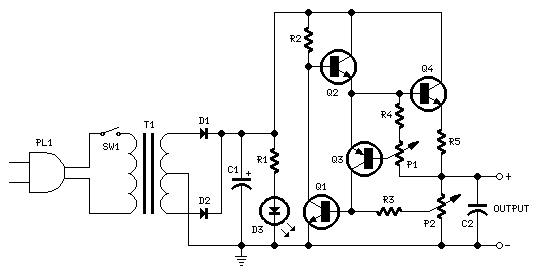 Voltage range: 0.7 - 24V
Current limiting range: 50mA - 2A
A Variable DC Power Supply is one of the most useful tools on the electronics hobbyist's workbench. This circuit is not an absolute novelty, but it is simple, reliable, "rugged" and short-proof, featuring variable voltage up to 24V and variable current limiting up to 2A. Well suited to supply the circuits shown in this website. You can adapt it to your own requirements as explained in the notes below.
Posted on Saturday, August 22, 2009 • Category: Power Supplies
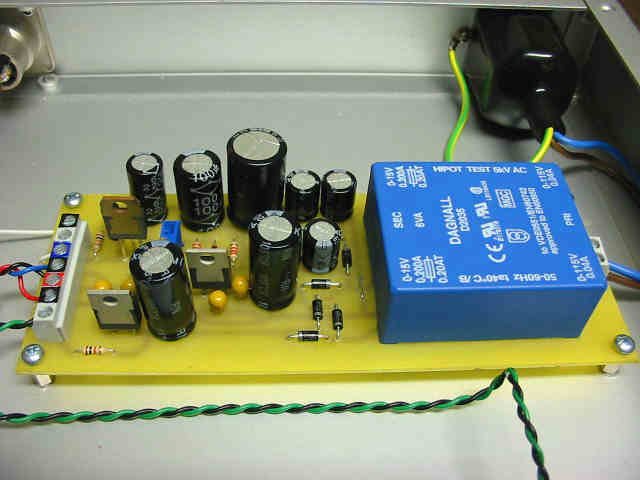 The main balanced power supply is constructed with the usual suspects, 7815 (pos 15 volt regulator) and 7915 (neg 15 volt regulator). These are fed from rectified AC via a PCB mount 6VA power transformer. I have use four diodes in a bridge rectifier configuration rather than a dedicated bridge rectifier as people have had trouble finding P04 and W04 rectifiers and it allows you to get esoteric with low noise switching diodes. I used the simple and easy to get IN4004 but some at Tech Talk have suggested more exotic devices.
Posted on Saturday, August 22, 2009 • Category: Power Supplies
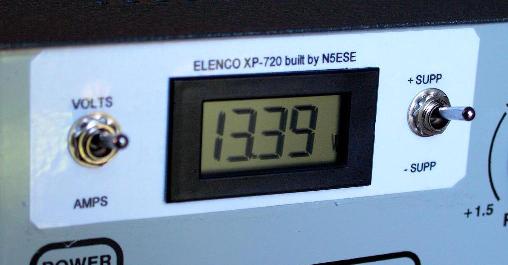 I frequently have a need for a variable supply when testing homebrew circuits, and the triple power supply is just what I need on the bench. With an amp out at 13.5 V, it will easily handle that QRP full-gallon. It even has 6 and 12 V AC available, for those rare filament-power circuits.
Posted on Saturday, August 22, 2009 • Category: Power Supplies
 As is commonly the case, this supply was born of necessity. There is absolutely nothing special about the circuit, except that as shown, it is quite capable of up to 20 Amps intermittently or 10A continuous. Simply use a bigger transformer, bridge rectifier and more capacitors and output transistors
to get more current. The basic circuit should be good for up to 100A or so, using a 5A TO3 regulator IC, but it can obviously be increased further (if you really do need a 500A supply!).
Posted on Friday, April 11, 2008 • Category: Power Supplies
 Many times we needed one relatively powerful supply in order to we supply various appliances with + 13.8V, as transceivers CB, charge lead-acid batteries, etc. The circuit it uses known completed that is capable gives in the his exit, current in continuous operation 5A and 12A peak current. It does not only need few external component. Exist a point which it will be supposed you are careful in the drawing and in board. Board has been drawn so as to exist the possibility of using also two case types completing. In the first case the IC1 in case TO-220 is placed above in pcb, in second with case TO-3, it can it�s placed above in heatsink and terminal his they are connected in the connector G3, in this case, certain we leave empty the place of IC1 above in pcb.
Posted on Tuesday, April 8, 2008 • Category: Power Supplies
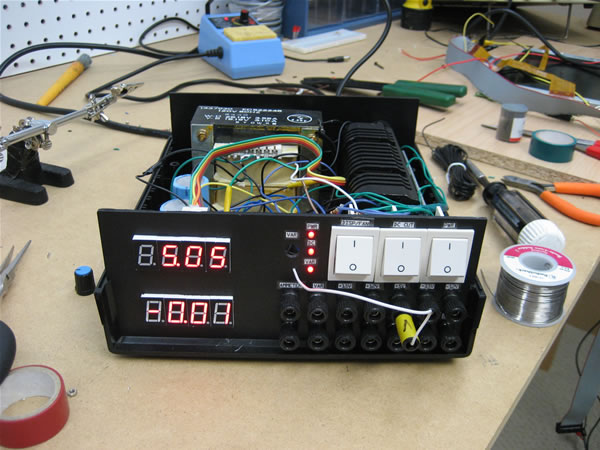 This is a bench power supply with regulated DC outputs -12V, -15V, +5V, +12V, +15V, and variable and one +35VDC unregulated output. I based this bench supply almost exclusively upon Andrew Kilpatrick's design. I did add a few things, but it's essentially the same and I am not writing here to claim any shred of originality. I spent somewhere around 80$ US on the project (including the GIANT transformer), which isn't bad compared with commercial supplies boasting similar features. Please note that I DID find a few minor errors in Kilpatrick's schematic, which have been fixed here. For details, read Kilpatrick's original page.
Posted on Wednesday, April 2, 2008 • Category: Power Supplies
This is a LM338 based power supply which is not complicated and easy to build. I am using the supply for a long time, have no problem yet. Only current adjust is missing but I overcome this situation by using an LCD panel ampermeter. There is no PCB for the circuit. I took a 3x16 copper plate and strip the unused areas by a knife. If you want you can use analog meters instead of LCD panels.
Circuit-Zone.com © 2007-2025. All Rights Reserved.
|
|
|